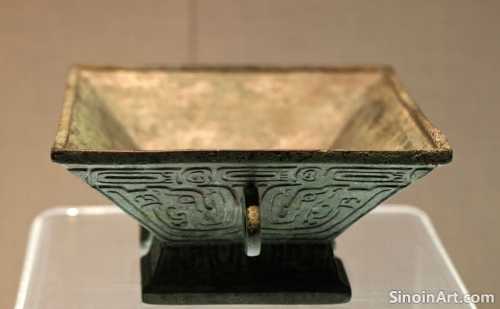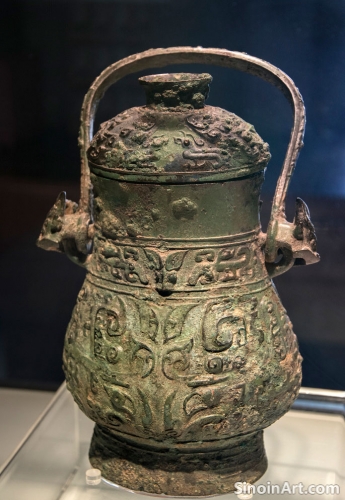The Legacy of Zhou Dynasty Bronzes: Shaping Later Chinese Ritual and Culture
|
The bronze ware produced during the Zhou Dynasty, with their inscriptions, symbolic designs, and their focus on ritual and ancestor worship, had a profound and lasting impact on later Chinese art and culture. The Zhou dynasty helped to solidify many of the traditions that would be seen for generations to come, and its impact can still be seen in Chinese culture today. The legacy of the Zhou dynasty was essential to the development of China as we know it.  The emphasis on ritual performance, with the careful use of vessels, instruments, and other objects, continued to influence later Chinese religious and social practices, helping to establish the format of many types of cultural events. The importance of ritual and tradition helped to shape many aspects of Chinese culture. The lasting importance of ritual is a key element in understanding the culture of the region.  The forms and designs of Zhou bronze ware, including the ding, gui, zun, and other vessels, became iconic and were frequently copied and adapted by later generations of artists and craftsmen. The lasting visual legacy of the Zhou bronze workers can still be readily seen in both historical and contemporary art forms.  The inscriptions on Zhou bronzes, with their focus on lineage, history, and moral pronouncements, helped to shape the way that future generations approached the recording of history and the study of the past. The emphasis on preserving and recording history helped to solidify China’s connection to its own past. The practice of inscription helped to set the stage for later forms of communication and record keeping. The legacy of Zhou bronze ware is a testament to their lasting importance in the history of Chinese art, religion, and culture, and their enduring influence over the development of Chinese society. The influence of the Zhou period can still be seen in the art, culture, and traditions of modern day China. The legacy of Zhou bronze ware continues to be deeply influential in Chinese culture. |
Tag : Zhou bronze legacy, Chinese rituals, ancestral worship, cultural impact, art history
Related information
- The Modern Use of Chinese Bronze Ware: Reinterpretations and Artistic Influence
- The Challenge of Authenticating Ancient Chinese Bronze Ware: Forgeries and Expertise
- Bronze Ware and the Development of Ancient Chinese Scientific Thought: Experimentation, Observation, and Knowledge
- The Use of Bronze in Ancient Chinese Transportation Systems: Harnesses, Decorations, and the Technology of Movement
- The Use of Bronze in Ancient Chinese Transportation: Chariot Decoration and the Display of Power
This article explores the modern use of Chinese bronze ware, highlighting how contemporary artists and designers reinterpret and adapt its forms and motifs, blending ancient traditions with modern aesthetics, showcasing the enduring influence of these powerful works.
This article discusses the challenges of authenticating ancient Chinese bronze ware, highlighting the use of visual inspection, scientific testing, stylistic analysis, and the expertise required to distinguish between genuine artifacts and forgeries.
This article explores how bronze ware played a role in the development of ancient Chinese scientific thought, highlighting its use in experimentation, observation, the creation of scientific instruments, and the preservation of knowledge, underscoring the connection between technology and the scientific understanding of the world.
This article explores the use of bronze in ancient Chinese transportation systems, highlighting its role in creating harnesses, decorative elements, and fittings for chariots and other vehicles, and underscoring its importance for the efficiency of transportation and travel.
This article explores the use of bronze in ancient Chinese chariot decoration, highlighting its role in communicating power and status, the visual symbolism used, and how these decorative elements enhanced both the aesthetic appeal and also the political message of these important vehicles of transport.